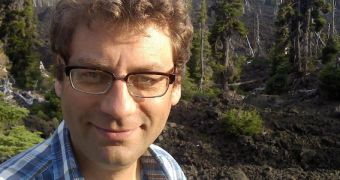Over the past few years, new studies have highlighted the potential for the Yellowstone supervolcano – the only active volcano in its class left on Earth – to erupt soon. The conclusions of the latest research on this issue, conducted by researchers at the University of Oregon, indicates that we have nothing to fear from this volcano during our lifetime.
UO Associated Professor of Geological Sciences Ilya Bindeman is the leader of the university team that investigates Yellowstone, using funds provided by the US National Science Foundation (NSF). He admits that, according to previous researches, the volcano is behind schedule on its eruption by a few thousand years. The last time it blew off was around 640,000 years ago.
In the last 2 million years, the volcano has erupted a total of 3 times, but never during times when civilization existed. If it blows up now, then all North America, including sections of Mexico, all of the continental United States, and Canada will be covered by a few inches of ash in less than a week.
All life within a few hundred kilometers of the supervolcano would be annihilated, and agriculture and photosynthesis over the affected areas would become impossible. In some instances throughout Earth's history, experts say, supervolcano eruptions are believed to have caused miniature extinction events.
"Yellowstone is one of the biggest supervolcanos in the world. Sometimes it erupts quietly with lava flow, but once or twice every million years, it erupts very violently, forming large calderas” that measure up to tens of kilometers across, Bindeman explains.
The most significant effect of such a blast would be rapid global climate cooling, brought on by massive amounts of ash and other materials spilled into the atmosphere. Modern civilization would most likely be turned on its head as a result, but the UO team is convinced that the next violent explosion will not occur until 1 million to 2 million years from now.
“Our research of the pattern of such volcanism in two older, ‘complete’ caldera clusters in the wake of Yellowstone allows a prognosis that Yellowstone is on a dying cycle, rather than on a ramping up cycle,” Bindeman goes on to say. The expert adds that even the motions of the North American tectonic plate influence the behavior of the supervolcano.
“Yellowstone is like a conveyor belt of caldera clusters. By investigating the patterns of behavior in two previously completed caldera cycles, we can suggest that the current activity of Yellowstone is on the dying cycle,” the investigator suggests. His team has discovered recently that most of the hot spots in the volcanic complex use material that has already erupted, rather than producing new magma.
Binderman, who conducted this research with aid from an NSF Faculty Early Career Development (CAREER) award, concludes by saying that the time between Yellowstone eruptions is currently growing very fast.

 14 DAY TRIAL //
14 DAY TRIAL //